In India, summertime means mangoes as well as a long, cool drink of tender coconut water...
Ah, India in the summer! A heady mélange of tastes and smells that only India can evoke—a mix of mango and jasmine, coriander, cumin and coconut, and a thousand other memories that go back to childhood days, when one’s olfactory sense and taste-buds mingled, to bring the whiff of green mango peel and fresh coconut shavings— perfect ingredients for fish curry. Or, the visual treat of a fruit vendor’s stall, where the the inky-black jamun, or the Indian blackberry, vied with the golden mango, to the exotic red of the pomegranate and the humble, but nevertheless, always present, coconut.
Travel Escape builds a strong case for ‘nature’s own drink’ and for the ‘king of fruits’, in a whistle-stop exercise that will seek to extoll the benefits of both the fruits and the special place that they hold in India’s echelons.
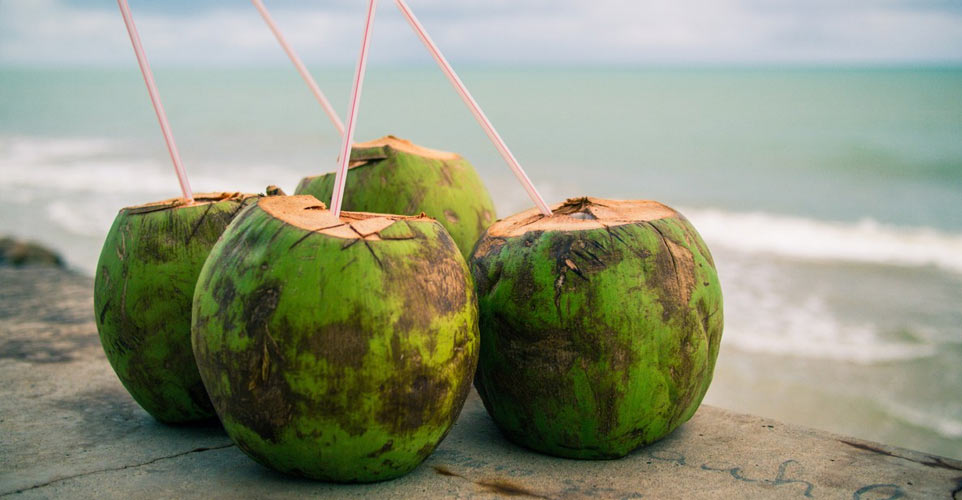
Here’s what Morton Satin, Chief of the Food and Agricultural Organisation’s Agricultural Industries and Post Harvest Management Service (US), has to say about coconut water: “It is a natural isotonic beverage with the same level of electrolytic balance as we have in our blood. It is the fluid of life, so to speak.” And indeed, it would seem so. For starters, the drink is a coolant, keeping the body cool in the summer. Applying it to the skin is said to prevent boils and help remove the rashes caused by small pox, chicken pox and measles. What’s more, it is considered a close substitute for blood plasma, since it is sterile, cool and easily absorbed by the body.
The cocos nucifera, or the coconut, is perhaps one of the few trees of which every single part is used. From it come many natural products, including food, drink, fibre, building materials and chemicals. It’s habitat around the world is in lowland tropical and sub-tropical areas. In India, the coconut is grown mainly along the coastal states of the country and also in the north-eastern region.
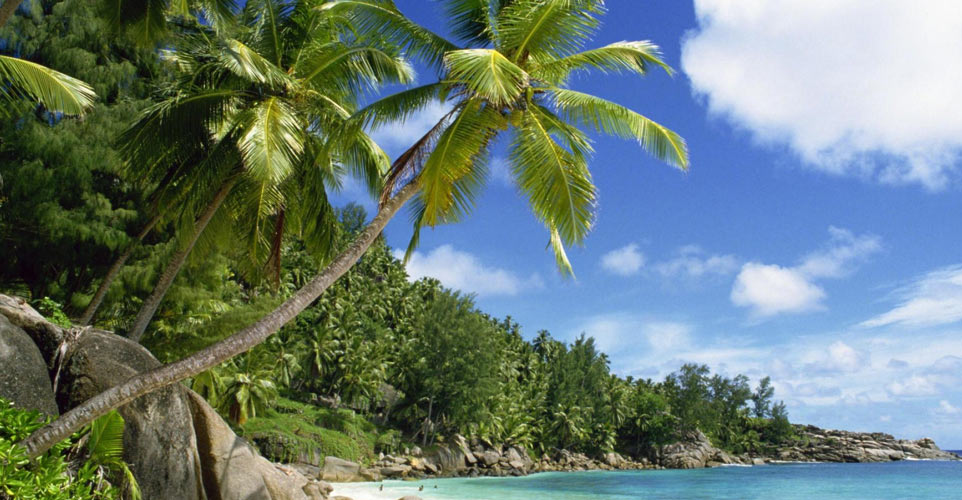
The tree is a pinnate, in that, its leaves are feather-shaped and often used as thatching for the roofs. The trunk is used for building supports, the stem can be tapped near the top of the tree to yield a sugar which can then be fermented into an alcohol.
The fruit is classified as a one-seeded drupe (a fruit with a hard outer husk and a fleshy interior) and its fibrous husk is the coir which is used for making mats and ropes and a million other things, including yarns, aquarium filters, car seat covers, flower pots, sound proofing, brushes, bristles, mattresses, door mats, rugs, carpets... the list is endless. Turns out that coconut trees are good for erosion control, as its fibres entwine well with the ground and prevent the top-soil from being washed away during storms.
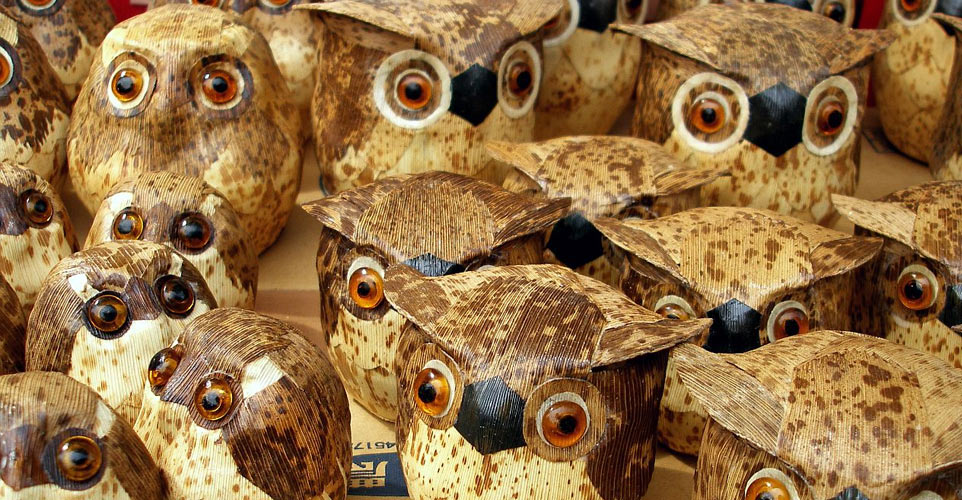
There’s more. Coconut oil is regularly used as hair oil by many people in India (especially in South India), while in South-east Asia, it is used as a basic ingredient in some of the cosmetic soap products as well as in the making of toothpaste for sensitive teeth.
As for coconut water, it’s right back in favour and stands tall in the highly competitive soft-drink market in the country. In fact, increasingly, doctors in India are recommending the drink to their patients for its therapeutic value as well as for the fact that it has proven to be a good substitute for saline glucose. In Kerala and Tamil Nadu, it is the preferred drink in many cities. In Kochi, for instance, thanks to the efforts of the Coconut Development Board, there are more than 100 “elaneer pandals”, or outlets selling tender coconut water. You can also buy it from footpath vendors, fruit stalls, cold drink parlours, restaurants and even, five-star hotels.
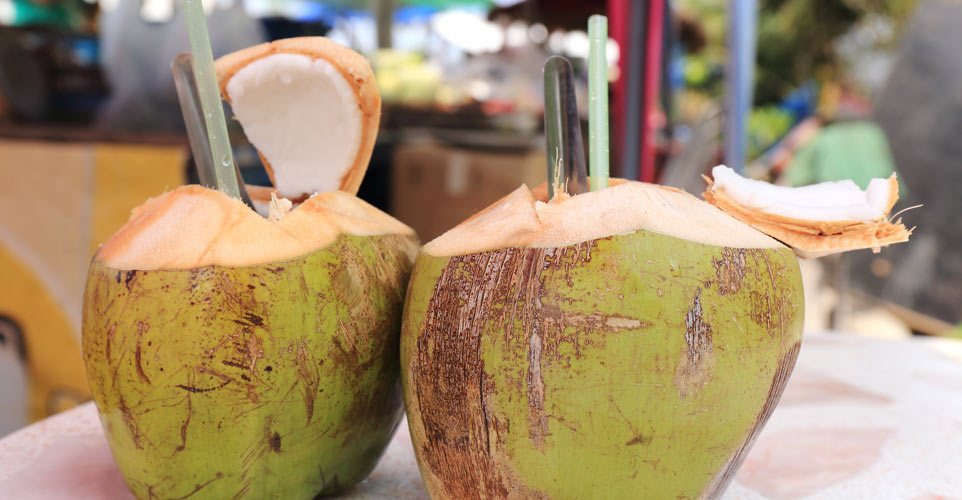
Says Sebastian, an exclusive retailer of the popular soft drink in Kochi, “The demand is always on the increase, but not our sales, as more and more sellers emerge every day.” Much of Kochi’s coconut supply comes from neighbouring Palakkad.
In Chennai, too, coconut water is a hot favourite. If you’re in the city, head to Sowrabhya on the busy Sahodaran Ayyappan Road, which is known for its specialty drink, made from tender coconut water and coconut kernel. Chennai’s absorption with the coconut is evident from the fact that the Coconut Development Board and the Agriculture Department is observing 2008 as Year of the Coconut, during which, various programmes, an international seminar, and meetings, would be organised to discuss such issues as the health benefits of coconut oil, etc.
Maharashtra and South India make liberal use of fresh coconut in their cuisine. Chutneys, curries, rice dishes and sweets—the ubiquity of the coconut can be seen during all meals.
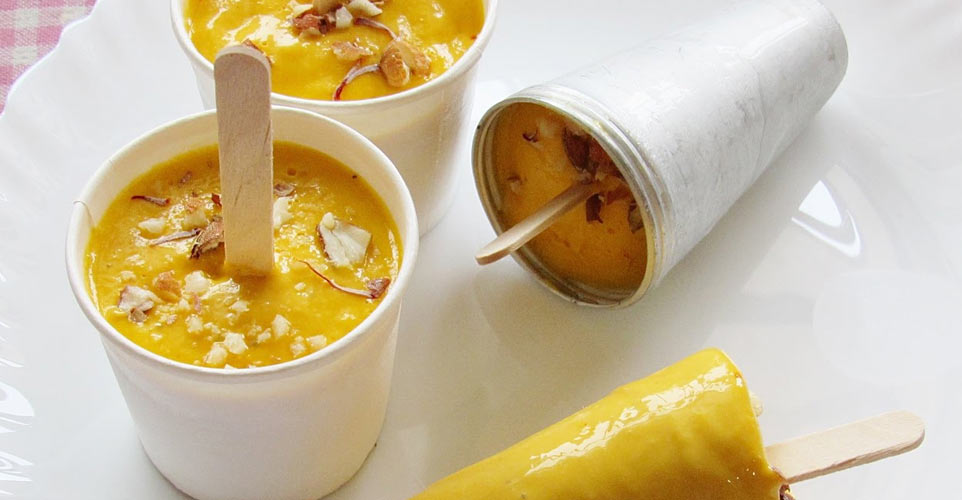
Mango and summer-time go hand in hand in India. Just consider the list of mango foods available from this one single fruit. Of course, you can eat the fruit raw, or make raw mango curry, mango raita, pickle, chutney, ice-cream milk-shake, burfi, peda, mawa and juice. It is used in the manufacture of juices, jams, jellies and preserves, and the unripe fruit is made into pickles and chutneys. Small wonder then that it is the most important fruit in India, grown as it is in an area of 1.23 million hectares or 3 039 396.19 acres, with an annual production of about 10.99 million tonnes, which, in turn, accounts for 57.18 per cent of the total world production.
The mango has been around for more than 25 million years, and in India—from Punjab and Uttar Pradesh in the north to Gujarat and Maharashtra in the west, to Madhya Pradesh in central India, to Bihar, Orissa and West Bengal in the east, to Andhra Pradesh, Karnataka and Tamil Nadu in the south—this king of fruits holds absolute sway.
There are a mind-boggling 1,500 varieties of mango available in India. To name just a few, there’s the world-famous alphonso from Maharashtra and the banganpalli, dussehri, kesar, langra, chausa, malgoa, neelam and many, many more (please give origin).
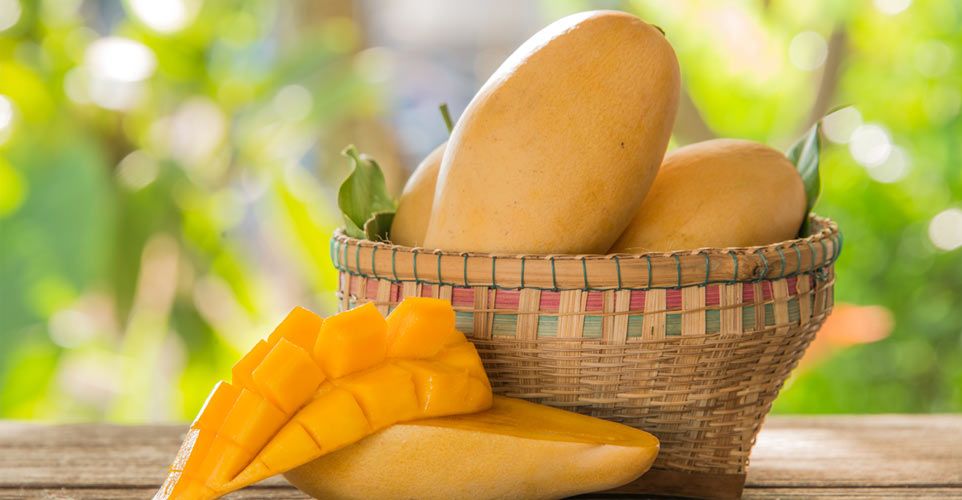
In North India, the raw mango gives a remarkable spice (amchur) that is much used to flavour certain vegetable dishes and lentils. The stone is removed from the unripe fruit; it is cut, dried and then ground to a pale grey powder, which is then used to lend the sour element to the cuisine. Pickled unripe mangoes (aam ka achar) are commonly served as an accompaniment with simple meals of rice and cooked legumes (dal) all over the north, and even, South India. It’s interesting to note here that a similar, yet oil-free, pickle made from ripe mangoes (amba) is eaten in Iraq, where it is processed into a coarse sauce that goes excellently with grilled meats (shawarma).
Significantly enough, both the mango and the coconut have auspicious connotations and are used to propitiate the gods. During important festivals in Maharashtra and in the south, people decorate their doorways with fresh mango leaves, the significance of which relates to a legend. It is believed that Kartik and Ganesha, the two sons of Lord Shiva and Parvati, adored mangoes. Kartik urged people to tie green mango leaves to their doorways to signify a good crop and general well-being.

This fruit extraordinaire is also a sacred symbol of fertility and the yellow-orange colour of the fruit is considered an auspicious colour for saris. The fruit has made inroads into the realm of jewellery as well, with traditional gold and diamond ornaments using the mango motif (maangai maalai, the mango necklace of South India). The paisley or mango is a popular and time-honoured motif used in traditional Indian saris and clothes.
This then, is the case for the mango and the coconut—both evoke powerful symbols of tradition and heritage. And even though the mercury rises in the summer months, take heart. There’s mango a-plenty to cheer the palate, and a long, cool drink of tender coconut water will beat the heat.
